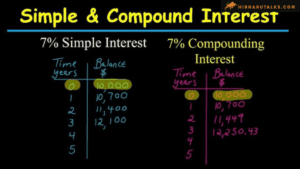
The Role of Dividends in Stock Investing: A Comprehensive Guide
Contents
- 1 Dividend stocks
- 1.1 The Role of Dividends in Stock Investing: A Comprehensive Guide
- 1.1.1 What Are Dividends?
- 1.1.2 How Dividends Impact Stock Investing
- 1.1.3 Key Metrics to Evaluate Dividend Stocks
- 1.1.4 Strategies for Investing in Dividend Stocks
- 1.1.5 Risks and Considerations
- 1.1.6 Conclusion
- 1.1.7 FAQs:
- 1.1.7.1 1.What is a dividend?
- 1.1.7.2 2.How do dividends affect stock prices?
- 1.1.7.3 3.What is a dividend yield?
- 1.1.7.4 4.What is a dividend payout ratio?
- 1.1.7.5 5.How can I find good dividend stocks?
- 1.1.7.6 6.What is a Dividend Reinvestment Plan (DRIP)?
- 1.1.7.7 7.What are the risks of investing in dividend stocks?
- 1.1.7.8 8.Can dividends be taxed?
- 1.1.7.9 9.What is the difference between cash and stock dividends?
- 1.1.7.10 10.How often are dividends paid?
- 1.2 Dividend stocks
- 1.3 Understanding Stock Splits: A Comprehensive Guide
- 1.1 The Role of Dividends in Stock Investing: A Comprehensive Guide
Dividend stocks
The Role of Dividends in Stock Investing: A Comprehensive Guide
What Are Dividends?
Dividends are payments made by a corporation to its shareholders from its profits. These payments can be in the form of cash or additional shares of stock. Dividends represent a way for companies to distribute a portion of their earnings to investors as a reward for their ownership.


Types of Dividends
- Cash Dividends: Paid directly to shareholders in cash, usually on a quarterly basis.
- Stock Dividends: Additional shares of stock are issued to shareholders, increasing their total number of shares but not changing the company’s total market value.
- Special Dividends: One-time payments made under special circumstances, often when a company has excess cash.
How Dividends Impact Stock Investing
Income Generation
Dividends provide a steady stream of income, making them an attractive option for investors seeking regular cash flow. This can be particularly appealing to retirees or individuals looking for supplemental income.
Total Return Enhancement
Dividends can enhance the total return on an investment. Total return includes both the capital gains (or losses) from the stock price movement and the income received from dividends. Over time, dividends can contribute significantly to overall returns, especially when reinvested.
Stability and Predictability
Dividend-paying stocks are often seen as more stable and predictable compared to non-dividend-paying stocks. Companies that pay dividends are usually well-established with a history of profitability, which can provide a sense of security for investors.


Key Metrics to Evaluate Dividend Stocks
Dividend Yield
The dividend yield measures the annual dividend payment relative to the stock price. It helps investors assess how much income they can expect to earn from a stock in relation to its price. A higher yield can indicate a more attractive income opportunity, but it’s important to consider the company’s overall financial health.
Dividend Payout Ratio
The payout ratio indicates the percentage of earnings paid out as dividends. A high payout ratio might suggest that a company is distributing most of its earnings, which could be a sign of financial stability or, conversely, a lack of growth opportunities.
Dividend Growth Rate
The dividend growth rate measures the annualized percentage increase in dividends over time. A consistent increase in dividends can signal a company’s strong financial health and commitment to rewarding shareholders.


Strategies for Investing in Dividend Stocks
Dividend Growth Investing
This strategy focuses on investing in companies with a history of increasing their dividends. These companies are typically stable, with a track record of profitability and a commitment to returning value to shareholders.
High-Yield Dividend Investing
Investors seeking immediate income may focus on high-yield dividend stocks. While these stocks can provide higher short-term returns, they may also come with higher risk. It’s important to balance yield with the company’s overall financial health.
Dividend Reinvestment Plans (DRIPs)
DRIPs allow investors to automatically reinvest their dividends to purchase additional shares of the stock, often at a discount and without paying commissions. This can compound returns over time and increase the total value of the investment.


Risks and Considerations
Dividend Cuts and Suspensions
Companies can reduce or suspend dividends if they face financial difficulties. This can negatively impact income and stock prices. Investors should be aware of a company’s ability to sustain dividends during economic downturns.
Interest Rate Sensitivity
Dividend-paying stocks can be sensitive to interest rate changes. Rising interest rates may make bonds and other fixed-income investments more attractive, potentially impacting the demand for dividend stocks.
Tax Implications
Dividends can be subject to taxation, which can affect overall returns. The tax treatment of dividends varies by jurisdiction and individual tax situation.


Conclusion
Dividends play a significant role in stock investing, providing income, enhancing total returns, and contributing to investment stability. By understanding how dividends work and evaluating dividend stocks with key metrics, investors can make more informed decisions and potentially improve their investment outcomes. Whether you’re looking for income or seeking to boost your overall returns, dividends can be a valuable component of a well-rounded investment strategy.
FAQs:
1.What is a dividend?
A. A dividend is a payment made by a corporation to its shareholders, usually from its profits, and can be in cash or additional shares.
2.How do dividends affect stock prices?
A. Dividends can impact stock prices as they represent a distribution of company earnings, potentially influencing investor perceptions and stock value.
3.What is a dividend yield?
A. Dividend yield is the annual dividend payment divided by the stock price, showing the income return on the investment.
4.What is a dividend payout ratio?
A. The dividend payout ratio is the percentage of earnings distributed as dividends, indicating how much of the company’s profit is paid to shareholders.
5.How can I find good dividend stocks?
A. Look for companies with a strong history of dividend payments, stable financial performance, and a consistent dividend growth rate.
6.What is a Dividend Reinvestment Plan (DRIP)?
A. A DRIP allows investors to reinvest dividends to purchase more shares of the stock, often at a discount and without paying commissions.
7.What are the risks of investing in dividend stocks?
A. Risks include potential dividend cuts, interest rate sensitivity, and tax implications affecting overall returns.
8.Can dividends be taxed?
A. Yes, dividends can be subject to taxation depending on your jurisdiction and tax situation.
9.What is the difference between cash and stock dividends?
A. Cash dividends are payments made directly to shareholders, while stock dividends involve issuing additional shares.
10.How often are dividends paid?
A. Dividends are typically paid quarterly, but they can also be paid annually, semi-annually, or monthly depending on the company’s policy.





















2 comments